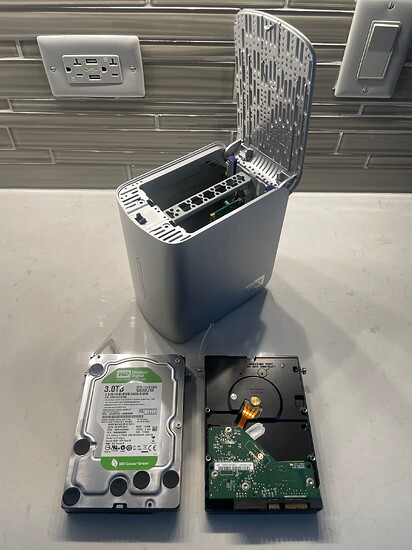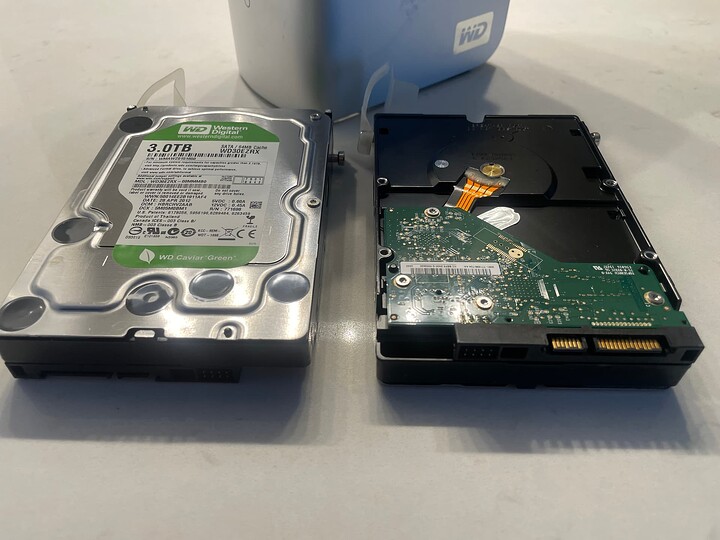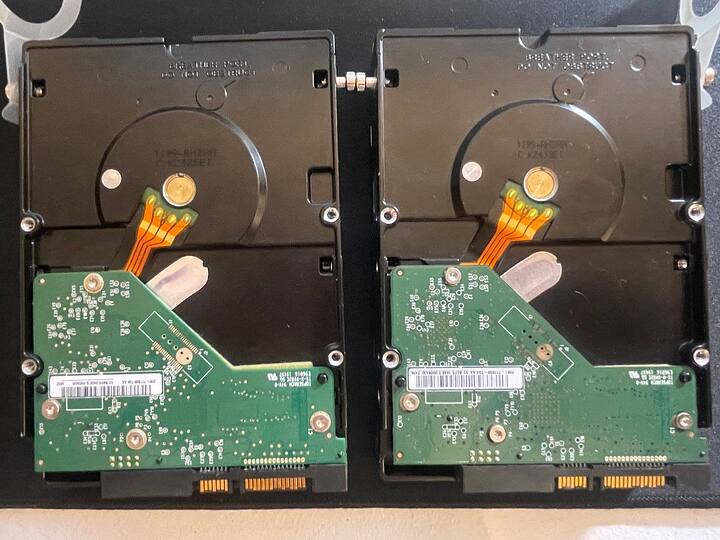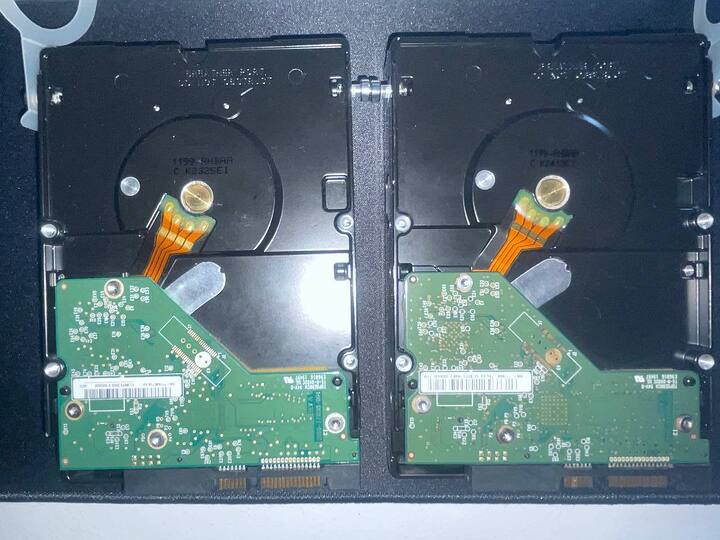Wait, do the things in order. 
First you need to make sure the drives spin, and you need to do this outside the WD enclosure. And you need to back up their raw contents. You absolutely must do this before you try anything in the WD.
Get an external SATA adpater. Something like this:
https://www.amazon.com/gp/product/B0759567JT/ref=ppx_yo_dt_b_search_asin_title?ie=UTF8&psc=1
Plug one of your RAID-0 drives in. Then do the other one. If they both spin, you can make a raw backup; this is not your readable data yet, it just ensures that we can restart from this same step no matter what happens later.
If both of your drives spin while plugged in, this is how you make a backup:
- Get a large hard drive, larger than the two you have put together. Since you had a 6TB WD thing, I’m assuming the disks inside are 3TB each? So get an 8TB drive (6 may or may not be enough), something like this:
https://www.amazon.com/Seagate-BarraCuda-Internal-Drive-3-5-Inch/dp/B07H289S7C/ref=sr_1_2?crid=316D8IIYCZLWW&keywords=8tb+hard+drive&qid=1707142173&sprefix=8tb+har%2Caps%2C114&sr=8-2&ufe=app_do%3Aamzn1.fos.18ed3cb5-28d5-4975-8bc7-93deae8f9840
-
Format this disk in Mac OS. If you got that enclosure I linked, you can have both this backup drive and one of your bad drives in at the same time and that’s what we need, but at this step (to prevent any misclicks) just have the new, large disk in. Format it.
-
Now plug in one of the drives that we want to rescue. When it spins up, open Terminal, and type diskutil list. This should list 3 drives: your OS disk, the backup disk we just formatted, and finally the disk we want to rescue. This disk will be somewhere in the list, but you’ll know which one it is because it will say stuff like 3 tb and Unknown. Look at the third column under identifier, it will say something like disk1 or disk2, etc. Note this.
-
Type cd and drag the backup disk’s icon from the desktop onto terminal. Hit Enter. This will put you in the root of the big disk.
-
Now type sudo dd if=/dev/diskX of=./disk-a.raw bs=1M status=progress. You must replace diskX with the ID we got from diskutil in the previous step! Hit Enter, type your password, hit Enter again, and go do something else, because this will take a while. (If you look at the output from dd, you can do some math to figure out how long it will take to copy 3 terabytes.)
-
When you come back and dd has finished, hopefully there will be no errors printed. You can eject the disk you just backed up. Get a sharpie, and draw a big A on this disk somewhere. Go ahead and dock the other one from your WD box with your computer. (While you have the sharpie out you might as well draw a B on this.)
-
Type diskutill list again to get the ID (it may or may not be the same diskX) and repeat sudo dd if=/dev/diskX of=./disk-b.raw bs=1M status=progress Again, replace diskX with the ID, and note that we’re using disk-b.raw as the output file because this is the B disk and we want it to go to a new file.
When this is done, check the backup disk in Finder (or just type ls -l -h. It should have two files, disk1.raw and disk2.raw. Both should be about 3 terabytes in size. If that is the case, you can breathe, because your data is very likely safe and recoverable.
I don’t know what kind of data we’re talking about (and I don’t care) but if it’s super valuable, like your crypto wallet with 10 BTC in it, I’d get another external drive and copy those .raw files onto that as well just to be super safe.
When this is done, you can put the A and B drives into the new WD you got and see if you get your data back. It would help if you got the exact same model (6TB) but if I had to bet one way or the other, the 4TB one should work as well.
Please, please note that all of the above assumes that the drives are functional! If one or both don’t spin up when plugged into the external SATA bay, then it’s pucker time, probably a PCB swap is in order. (If one of them spins, you can make a backup of that, then put its PCB on the bad drive and see if it wakes up. If both are dead, head to ebay, and you MUST get the exact same drive this time, to hopefully score a good PCB.) We’ll walk you through that too but first steps first: external docking bay, see if the drives work, make a raw backup if they do.




